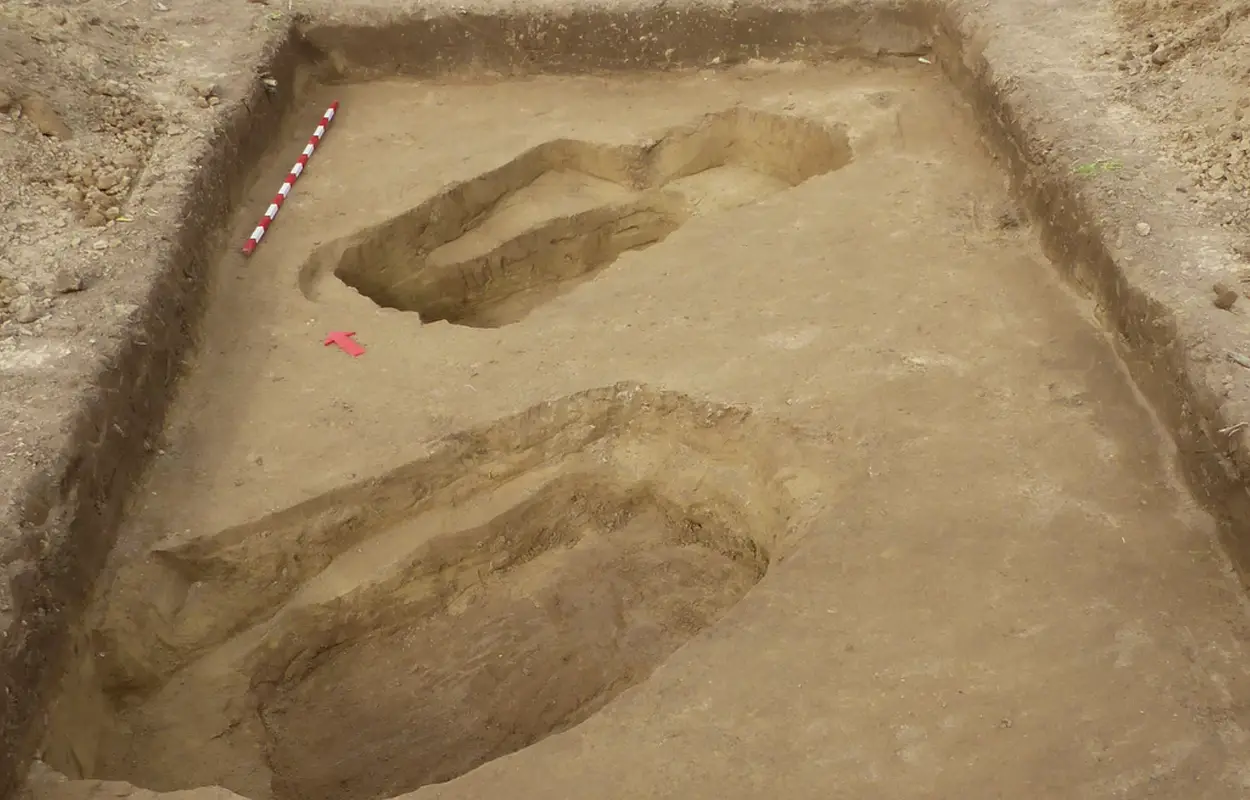An analysis of aerial photographs has led to the discovery of a previously unknown Avar-era cemetery on the outskirts of Tatabánya, Hungary.
The site was first identified in April 2025 by researchers from the Hungarian National Museum, who spotted rectangular discolorations in a grain field.
Working in collaboration with the Tatabánya Museum, archaeologists conducted an exploratory excavation on one of the features, which led to the discovery of two log coffin tombs.
The tombs are linked to Avar-era burial traditions dating from the 6th to 9th century. Due to prior looting, only bone fragments and remnants of coffin lids remain, offering faint but valuable insights into the burial practices from this period.
Researchers have identified up to 1000 other features, indicating that the site is an enormous Avar-Era cemetery.
Experts believe that continued excavation at the site could offer unprecedented insights into the Avar people, a nomadic group that once held power in the Carpathian Basin.
As research progresses, the Tatabánya cemetery promises to become a significant contributor to our understanding of early medieval life and death in Central Europe.
The study at Tatabánya forms part of a national research program “Cemeteries from Space”, which is applying new methods of archaeological research, including identification based on satellite and drone footage.
Header Image Credit : Tatabányai Múzeum
Sources : Tatabányai Múzeum





